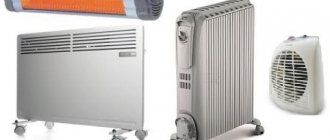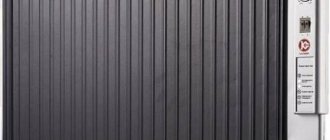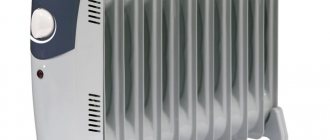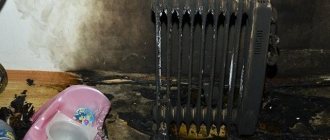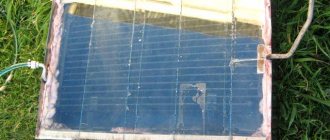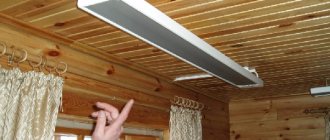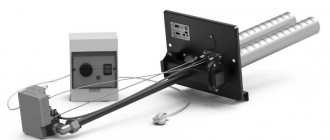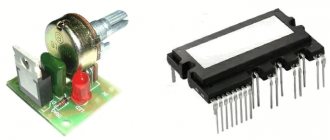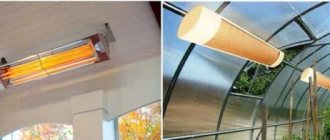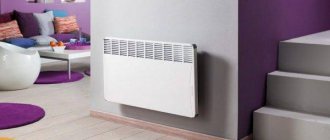Oil heaters are widely used for heating rooms in the off-season, as well as for heating buildings that do not have water heating systems.
We are often asked, how great is the risk of a radiator explosion? The answer is simple: extremely small. The harm of oil heaters is significantly exaggerated. On the Internet you can find many photographs of a burnt radiator against the background of charred walls. But there is no exact confirmation whether the fire is caused by the heater itself or by faulty electrical wiring. But still, cases of fire do occur and they are confirmed by eyewitnesses. So what should we do? Does it make sense to buy an oil heater or opt for a fan heater or convector?
An oil heater is an excellent source of heat during the cold season. Millions of such units are produced annually and they do not sit in warehouses. But if suddenly your device turns out to be defective, if the stars in the heavens align in such a way that all security systems fail, then you need to know where to expect trouble and what to pay attention to.
What is an oil heater and how does it work?
In terms of its design, an oil heater is a regular heating radiator, into which an electric heating element is mounted, and the free space inside is filled with mineral oil. Why not water, like regular batteries? The oil has a low coefficient of expansion when heated and retains heat longer.
The principle of operation of an oil heater is similar to the principle of operation of a water heating radiator: the oil comes into contact with the heated surface of the heating element located at the bottom of the tank, heats up and rises. The entire volume of oil gradually warms up and transfers heat to the metal walls of the heater. The heated walls of the radiator radiate thermal energy into the space, heating it.
To prevent overheating of the coolant, the device is equipped with a thermostat, which allows you to control the heat transfer of the device.
Oil heater device
To use the heater correctly and carefully, you need to understand at least the general principles of its design.
Oil heaters are a sealed case with mineral oil, which is heated thanks to built-in electric heating elements.
Oil heater device.
Oil heaters have been known to everyone since childhood. At one time, this was the most popular option for obtaining additional heat in a room. However, over the past decades, the situation has changed, and on the modern market there are various models of similar equipment with more complex designs and improved operational safety indicators. It is the simplicity of the design that causes a large number of counterfeits or simply low-quality devices on the modern market. It is much easier to manufacture such a device than other types of heaters.
If desired, even a schoolchild who understands physics can make an oil heater. Therefore, it is better to go to a store with a good reputation for such a device, rather than buy dubious imported equipment second-hand. In addition to this basic rule for choosing equipment, adhere to two more.
First, pay attention to the labeling of the device. It should not raise the slightest doubt. Some counterfeit manufacturers simply print out the logo of a famous brand and glue it to the box. Such markings immediately catch the eye and look very dubious.
Oil heater control panel.
Secondly, when studying the operating instructions for the device, pay attention to its service life, which is indicated there. As a rule, this is 5 or 7 years. Longer periods are less common. Be prepared to use the heater for this period and not a day longer.
Otherwise, the likelihood that it will explode increases significantly. You should not save on this equipment. This is fraught with large material losses in the event of a fire. A heater that has served you for its entire stated service life must be thrown away. Before doing this, it is recommended to damage it so that no one else has the opportunity to use the potentially dangerous device.
Types of oil radiators
According to their type, oil radiators are panel and sectional .
A panel heater is a sealed tank made of two flat metal panels, the distance between which is small. A panel heater releases heat into a space by radiation. The share of convective heat transfer is minimal, so you should not count on high heat transfer from such a heating device. The main advantage of this type of heating devices is their compactness: the heating panel takes up virtually no space and is perfectly attached to the wall surface.
A sectional oil heater consists of separate sections, each of which is filled with oil. The sectional heater has a ribbed shape, which allows you to create upward heat flows. Such a heating device has high heat transfer, because it releases thermal energy into the surrounding space not only by radiation, but also by convection. Some models also have a built-in fan that accelerates the mixing of warm and cold air to quickly heat the room.
To control the operation of a sectional oil heater, a thermostat is used, with which you can select the heating temperature of the surface of the heating device and maintain its value at the same level.
Design and types
The principle of operation of oil radiators is simple: the oil is heated from the built-in heating element, and the housing is heated from the oil.
The body transfers heat to the air. The basic design of the oil radiator is very simple. There is a sealed metal container filled with oil. It has a built-in tubular heating element - heating element. When heated, it transfers heat to its environment - the oil. At the same time, the heated part becomes lighter and rushes upward, and the colder part takes its place. This creates natural convection inside the radiator, and its entire surface heats up evenly. The body, heated by oil, transfers heat to the air around it.
Depending on the shape, there are two types of devices: panel and sectional.
Panel oil heaters
They consist of one or two, rarely three heating panels. They are two metal plates welded together. In them, using stamping, channels are formed for the movement of coolant, in this case oil. At the bottom, heating elements are inserted into the plates.
Due to the peculiarities of their shape, they turn out to be flat, but high and (or) wide. Therefore, they are conveniently placed along the wall or furniture. Some options can be hung on walls. Therefore, according to installation methods, they are:
- Floor-standing. These are mobile modifications that are mounted on legs or wheels, which make them easier to move.
- Wall-mounted. This is a stationary option. Holders or brackets are mounted on the wall, and a wall-mounted oil heater is hung on them. All you need is electricity to get started. For a temporary solution, you can use an extension cord, but for permanent use it is advisable to make an outlet under the heater. It is not advisable to place the socket “above” or “behind” the heater - they do not tolerate constant heating.
Panel oil radiators can be wall-mounted or floor-mounted
Sectional oil radiators
Electric batteries in this case have a different appearance. They resemble sectional water heating radiators. Due to their structural features, they have slightly higher efficiency due to a larger heat transfer surface. The finished sections are welded into a single structure, into which the same heating element is inserted. In this group, the vast majority are floor-standing models, since the depth of the device is considerable, and hanging it on the wall is extremely inconvenient.
Advantages of oil heaters
An oil radiator creates a comfortable heat flow similar to that of a conventional heating radiator. Oil heater panels heat up to approximately 90 degrees during normal operation. This reduces the risk of fire. The maximum temperature to which the unit can heat up is 150 degrees (depending on the model, it may be less). Therefore, there is a completely logical recommendation not to touch the heater during operation.
Modern oil heaters do not emit anything harmful into the room atmosphere during operation. The low-temperature operating mode and relatively low heating of the housing allow the device not to dry out the air in the room, not to produce a burning smell and not to burn small particles and dust. The heat emanating from the body is reminiscent of the natural warmth of a fireplace.
The absence of noise during operation is also a clear advantage of the device, which distinguishes it from fan heaters and heat guns.
The dimensions of oil heaters are quite compact, many of them are equipped with wheels that make it easy to place the device in the room.
All modern models are equipped with a heating mode switch and a thermostat that regulates the temperature of the oil battery. When the oil inside has heated up to the required temperature, the heating automatically turns off; as the coolant cools, the internal heater turns on and off. This saves energy and serves as protection against overheating.
Advantages of oil heaters
High level of device security. In an oil radiator, all heating elements are hidden inside, and the outer shell heats up to a temperature of no more than 60 degrees.
This eliminates the possibility of a fire due to a fall or burns to the skin surface due to tactile contact. The last factor is important in families with small children.
- Long service life. The device is designed in such a way that the components do not burn out due to long continuous operation. The device can work without turning off for up to three days.
- The compact size of the device and its mobility allow you to move it to different parts of the house or apartment. And quiet operation will not cause any discomfort.
- The price of oil radiators is affordable. The cost depends on the number of sections that the device has.
- No foreign odors are emitted during operation of the device. Radiators do not dry out the air in the room, which means that you do not have to spend extra money on purchasing a humidifier.
- To install such a heater, you do not need special knowledge or tools. You simply plug in the device and enjoy the warmth.
Disadvantages of oil heaters
Mineral oil is flammable. Ignition can occur when it overheats, as well as when the electric heater short-circuits. Such an emergency situation may be accompanied by boiling and explosion of oil, which inevitably leads to fires.
Manufacturers of oil heaters use various additives to mineral oil that reduce its flammability, but so far no significant results have been achieved in this area.
Oil heaters do dry the air, significantly reducing humidity, but this is a natural physical process common to all types of heaters - as the temperature rises, the relative humidity decreases. Dry air can cause problems with the respiratory system, especially for those who have related diseases or a tendency to respiratory diseases. A humidifier will help.
Advantages and disadvantages of oil heaters
Among electric heating devices, oil ones are the only ones that are called electric radiators. Oil heating has many advantages:
- does not dry out the air;
- radiators transfer heat mainly through thermal radiation;
- has a safe design;
- the surface almost never heats up above 50-60 oC;
- easy installation and management.
All this is true, but there are also disadvantages. The main thing is a fairly large inertia. Oil, which serves to transfer heat, has a high heat capacity. And until it warms up, the air will not begin to warm up. But this same property allows you to smooth out temperature differences when turning on/off.
The biggest problem is high inertia and low efficiency: too many heat transfer stages
The second disadvantage is that the safety and durability of the work depends on the quality of workmanship. An incorrectly designed structure can simply burst when heated, the seams are poorly sealed, and oil will leak. Therefore, buying cheap but unknown brands is a risky business.
What are the dangers of oil heaters?
Most modern models are safe, perfectly adjustable and even turn off on their own if they overheat. Why do fires occur due to the fault of heaters?
Excess electrical load
The electrical network in each home is designed for a certain load. If you turn on many different electrical appliances at the same time, their total power may be such that the network cannot withstand this overload. If the wiring is done correctly, the entire network will automatically turn off. But in old buildings, internal electrical wiring is often damaged, there is no automatic shutdown system, and fire occurs due to excess load. Until the electric heater was turned on, everything was fine, but the power of this device is not small and this is the result - the wiring is on fire! There's a fire in the house! But the heater itself was quite functional!
To prevent this from happening, periodically check the condition of the internal electrical wiring in the house. You cannot connect many electrical appliances through extension cords to one outlet - the wires cannot withstand the thermal load.
Heater malfunction
Heat transfer from the heating element to the surface of the device body is ensured by mineral oil and is controlled automatically by a temperature sensor. Any oil heater, even with double and triple protection, is potentially dangerous precisely because of the principle of its design.
Essentially, this is a vessel operating under pressure, which is dangerous in itself, plus the coolant (working fluid) in this vessel is heated (up to the ignition temperature of paper or wood), and the working fluid (oil) itself is flammable. As the volume of oil decreases, it will begin to boil. The oil volume may decrease due to microcracks in the heater body. Sometimes this is not noticeable at all - there are no oil leaks, the paint on the body does not seem damaged, but as a result of long-term use, the amount of oil has decreased.
To prevent this, the temperature is monitored by a sensor and transmitted to the automation. But any technical device can break down. If the sensor fails, the system malfunctions.
In addition, like all electrical appliances, the oil heater contains wires inside, surrounded by insulating plastic materials. If the plastic overheats, it melts, causing a short circuit and fire. If the heater is old, then its plastic parts may collapse - this is a natural process, but it is unsafe to use.
All modern oil radiators are equipped with two degrees of protection. The first stage is the thermostat. It automatically turns off the appliance when it reaches the selected temperature.
The second stage is protection against overheating. It works if auto shutdown does not work for one reason or another.
Damage to the seal of the housing is possible only if both systems fail at the same time. Such cases are extremely rare and only happen with low-quality heaters.
Repair of oil heating radiator
Most often the heating element fails. Replacing it is not at all difficult; you can easily do it yourself. But at the same time, another problem can be solved. This is typical for inexpensive Chinese heaters: oil often leaks from the side where the heating elements are attached. Therefore, when replacing the heating element, do not forget additional sealing. This can be done either by installing a paronite gasket, or by treating the connection with a heat-resistant sealant (with a use temperature of 350oC).
Leaking oil is a common problem in inexpensive models of sectional oil coolers
You need to start by removing the side panel. Find the screws at the bottom and top, unscrew them, and remove the cover. This is usually where oil leaks are visible. In order not to forget how and what is connected, either take a picture or sketch it (indicating the color of the wires). Now you can disconnect the wires and unscrew the plug with heating elements.
They are easy to remove: there are nuts, unscrew them, and simply remove the broken heater from the holes. Put a new one in its place. If the radiator has not been disassembled before and you don’t know what type of heater you need, take the faulty one with you to the store, show it there and say that you need the same one.
Install the new heater (don't forget the gaskets), tighten the nuts. Now insert the plug with the heating elements into the radiator and tighten it. To seal, as mentioned above, either install a gasket or apply sealant. Using an adjustable wrench, tighten the connection. But don’t overdo it; the metal is thin; it’s easy to break the thread.
Now, according to the sketched or photographed picture, connect the wires, then install the side panel. That's it, the radiator is repaired. And you did it yourself, with your own hands.
For those who better perceive the video, watch the video on how to change the heating element on an oil radiator.
Rules for the safe operation of oil heaters
- Always check the operation of the thermal protection at least when turned on. After 7 minutes of operation, the heater should reduce the temperature. If it continues to grow, then the device is faulty and will explode;
- It is not recommended to constantly use the units in the bathroom and other rooms with high humidity; You should not place or even touch the power cord to the hot body of the device - the “jacket” of the cord can easily melt;
- do not place the heater near furniture - when it comes into contact with finishing materials, it can heat surfaces that can emit harmful substances (plastic, MDF, chipboard, some fabrics);
- if the oil heater is leaking, do not try to repair it - most likely it is a defect - such breakdowns are not repaired, but sent for recycling (or replaced under warranty);
- Do not turn on the radiator in a horizontal position: the heating element may overheat and the oil may boil. If the thermostat is working properly, the device will turn off, but if there is a problem in the system, the housing will crack and flood the room with hot oil;
- do not cover the heater with anything - it should not be used for drying clothes;
- repairs should only be carried out in centers that provide a guarantee; do not use heaters with an expired warranty, even if they are working correctly;
- Never leave children alone near operating appliances, constantly monitor the operation of the device and have automatic fire extinguishing means on hand.
And one more thing: if you have grandma’s old oil heater lying around somewhere on the mezzanine, take it to the trash heap and buy yourself a new one. You should not experiment with such units. Firstly, it is unsafe, and secondly, all old heaters consume a lot of electricity.
As for modern oil radiators, their degree of danger is approximately the same as that of an iron or hair dryer. But we use all these household appliances! It is important to know the rules for safe use and monitor the operation of the heater.
Even if the oil heater was purchased in a store, its manufacturer is a well-known company, carefully read the instructions and strictly follow the rules of use. The main thing is do not leave heaters unattended, especially if there are children in the room. Remember, the life and health of each of you will depend on how seriously you take the issue of fire safety.
- < Back
- Forward >
